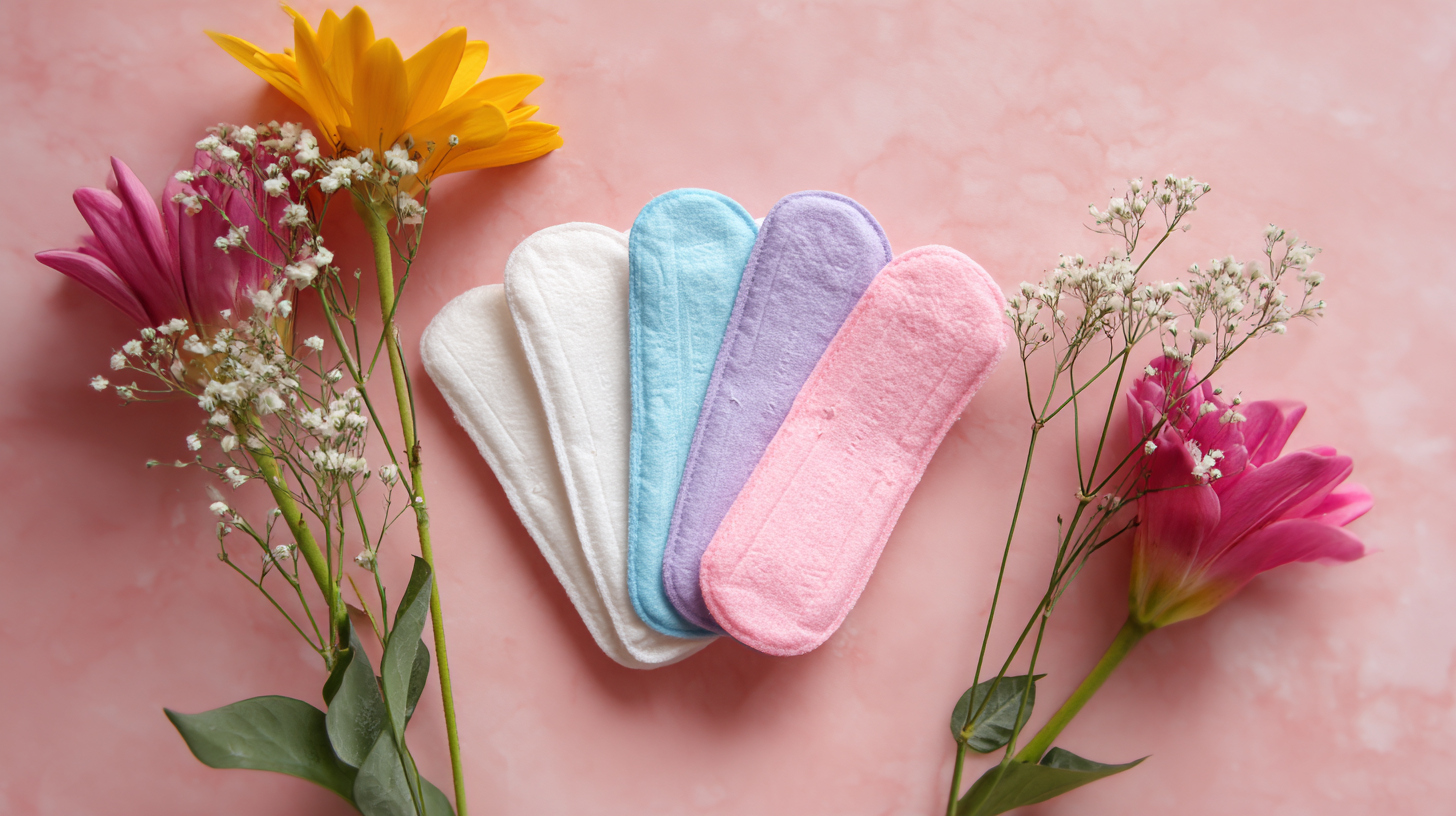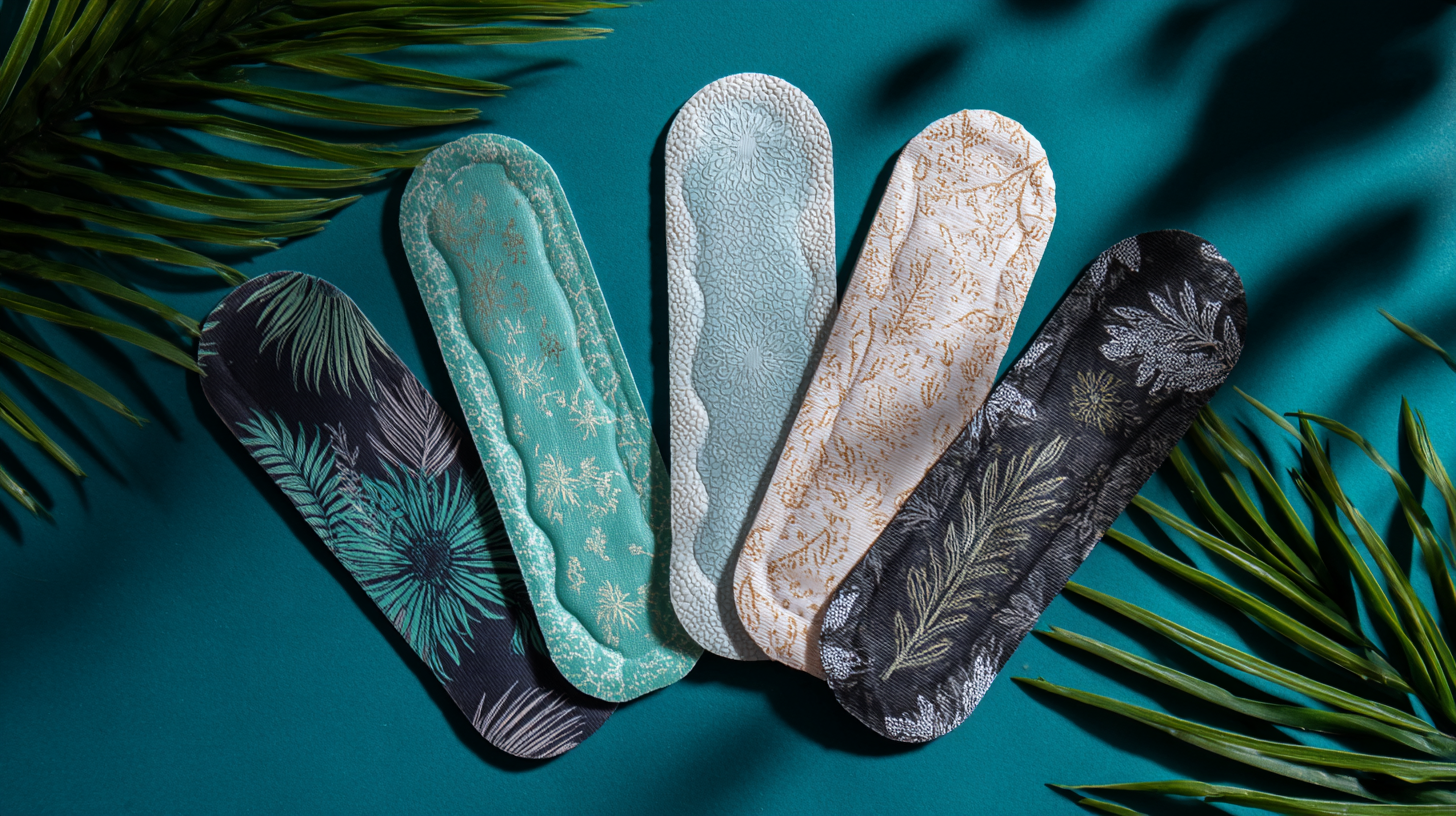
7 Facts About Best Sustainable Sanitary Pads That Every Global Buyer Should Know
In recent years, the conversation around menstrual health and hygiene has garnered significant attention, particularly concerning the environmental impact of conventional sanitary products. As consumers become increasingly conscious of their ecological footprint, the demand for Sustainable Sanitary Pads has surged. These eco-friendly alternatives not only provide comfort and protection during menstruation but also aim to minimize waste and reduce harmful effects on the planet. However, with the myriad of options available, global buyers must navigate the landscape of sustainable menstrual products with care. This blog presents a checklist of essential facts that every buyer should be aware of when considering Sustainable Sanitary Pads, ensuring informed choices that contribute to both personal health and environmental sustainability.

Key Characteristics of Sustainable Sanitary Pads in Today's Market
When exploring the market for sustainable sanitary pads, understanding the key characteristics is essential for making informed purchasing decisions. One prominent feature is the use of organic materials. Many eco-friendly brands prioritize cotton that is grown without harmful pesticides or synthetic fertilizers, ensuring that their products are not only gentle on the skin but also on the planet. This commitment to organic farming practices helps to reduce the environmental impact often associated with traditional sanitary products.
Another important aspect of sustainable sanitary pads is their biodegradability. Unlike conventional pads, which can take hundreds of years to decompose, many sustainable options break down naturally within a year or two. This means that consumers can contribute to reducing landfill waste and pollution. Additionally, some brands offer reusable alternatives, such as cloth pads, which further minimize waste while providing a comfortable and safe experience during menstruation. As the demand for eco-friendly products grows, understanding these characteristics empowers buyers to make choices that align with both their values and environmental stewardship.
7 Facts About Best Sustainable Sanitary Pads That Every Global Buyer Should Know - Key Characteristics of Sustainable Sanitary Pads in Today's Market
| Characteristic | Detail |
|---|---|
| Material | Organic cotton or bamboo fibers |
| Biodegradability | Breaks down within 6 months in compost |
| Packaging | Recyclable or compostable packaging |
| Absorbency | Equal to or greater than conventional pads |
| Chemical-Free | No synthetic fibers or harmful chemicals |
| Skin-Friendly | Hypoallergenic and suitable for sensitive skin |
| Social Impact | Support for fair labor practices and local communities |
Environmental Impact: How Eco-Friendly Sanitary Pads Benefit the Planet
Eco-friendly sanitary pads are revolutionizing menstrual hygiene by significantly reducing environmental impact. Traditional disposable pads, primarily made from plastic and synthetic materials, can take up to 800 years to decompose, contributing profoundly to landfill waste. According to a report by the World Health Organization, over 300 million women use menstrual products globally, resulting in millions of tons of waste annually. In contrast, sustainable pads are crafted from biodegradable materials such as organic cotton, bamboo, and other plant-derived fibers, which can decompose naturally within a few months.

Beyond waste reduction, sustainable sanitary pads also promote healthier living. Many conventional pads contain harmful chemicals and additives that can disrupt hormonal balance and lead to health issues. Research published in the Journal of Women's Health indicates that switching to organic and eco-friendly products can reduce the risk of irritations and allergic reactions. By choosing sustainable sanitary pads, consumers not only support personal health but also contribute to a cleaner environment, underscoring the importance of informed purchasing decisions in today's eco-conscious marketplace.
Understanding Materials: The Science Behind Biodegradable Fabrics
The surge in demand for sustainable sanitary pads has led to an increased focus on the materials used in their production. Understanding the science behind biodegradable fabrics is essential for consumers seeking eco-friendly options. Biodegradable fabrics are typically derived from natural fibers such as cotton, hemp, and bamboo. These materials decompose over time, significantly reducing landfill waste compared to conventional synthetic pads composed of plastics that can take centuries to break down.
Moreover, the manufacturing processes of biodegradable fabrics often prioritize environmental impact. For instance, many sustainable pads utilize organic cotton, which is grown without harmful pesticides and fertilizers, promoting healthier soil and ecosystems. Innovations in fabric technology have also introduced options like Tencel, made from sustainably sourced wood pulp. Tencel not only provides excellent absorbency but also has a lower carbon footprint thanks to its closed-loop production process. This holistic approach to sourcing and manufacturing demonstrates a commitment to sustainability, appealing to environmentally conscious consumers who seek products that align with their values.
Statistics on Biodegradable Fabrics in Sanitary Pads
Cost Considerations: What Global Buyers Need to Know About Pricing
When considering sustainable sanitary pads, cost is often a significant factor for global buyers. It's essential to understand that while the initial price of eco-friendly options may be higher than conventional pads, this often reflects their quality and environmental benefits. Sustainable pads are generally made from organic materials and designed to minimize waste, which can lead to lower costs in waste management for communities in the long run.
Tip: Always compare the price per use when evaluating sustainable sanitary pad options. Although a pack may seem expensive, if it lasts longer or provides better comfort, it may prove to be more economical over time.
Buyers should also keep an eye on bulk purchasing options. Many brands offer discounts or incentives for larger orders, making it more affordable to stock up on these eco-conscious products. Additionally, consider shipping costs, as purchasing from local suppliers may mitigate expenses and reduce carbon footprints associated with transportation.
Tip: Research various brands and their pricing strategies to find the best value. Look for those that prioritize both sustainability and affordability, ensuring that your investment supports eco-friendly practices without breaking the bank.

Future Trends: Innovations Shaping the Sustainable Sanitary Pad Industry
The sustainable sanitary pad industry is witnessing remarkable innovations, driven by a growing awareness of environmental impact and consumer demand for eco-friendly products. As disposable hygiene products account for a significant portion of the global market, with sales expected to rise from $112 billion in 2021 to $129 billion by 2026, companies are looking for ways to reduce their carbon footprint while maintaining product efficacy. Emerging trends in this sector include the use of biodegradable materials and enhanced manufacturing processes aimed at reducing waste.
One significant trend is the introduction of probiotic-infused sanitary pads, which not only enhance personal hygiene but also support women's health by promoting a balanced vaginal microbiome. As standards for product safety and quality become stricter, innovations such as new testing methods for probiotics are paving the way for better quality control in sustainable sanitary products. This evolution is crucial for building consumer trust and ensuring that sustainable options can compete with traditional products, ultimately shaping the future of feminine hygiene.



